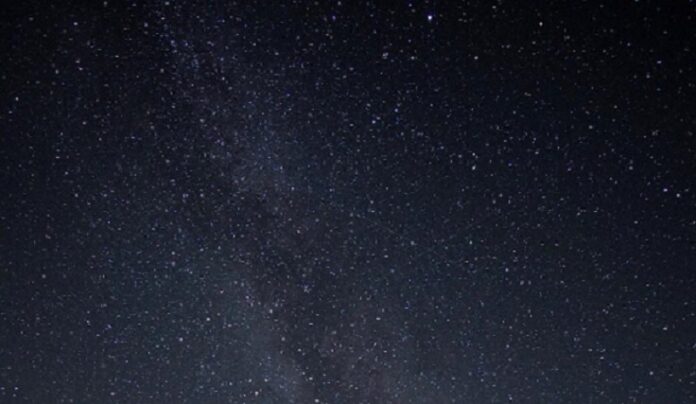Observation of 26 cm radio signals, formed due to hyperfine transition of cosmic hydrogen offer an alternative tool to the study of early univers. As for neutral epoch of the infant univers when no light was emitted, 26 cm lines are perhaps only window. However, these redshifted radio signals emitted by cosmic hydrogen in the early univers are extremely feeble and have been elusive so far. In 2018, EDGE experiment reported detection of 26 cm signals but the findings could not be independently confirmed. The main issue was instrument systematic and contamination with the other signals from the sky. The REACH Experiment is to employ unique methodology to overcome the bottleneck. It is hoped that this research group will reliably be able to detect these elusive signals in near future. If successful, REACH Experiment may bring ‘26 cm radio astronomy’ to the forefront in the study of early univers and help us much in unravelling the mysteries of early univers.
Når det gjelder studiet av tidlig univers, name of recently launched James Webb Space Telescope (JWST) pops up in our mind. JWST, a successor of hugely successful Hubble telescope, is a space-based, infrared observatory equipped to capture optical/infrared signals from the early stars and galaxies formed in the Universe soon after the Big Bang1. Imidlertid JWST has some limitation so far as picking up signals from the neutral epoch of tidlig univers er bekymret.
Table: Epochs in the history of univers since the Big Bang

(Kilde: Philosophy of Cosmology – 21 cm bakgrunn. Tilgjengelig på http://philosophy-of-cosmology.ox.ac.uk/images/21-cm-background.jpg)
Up to 380 k years after the big bang, the univers was filled with ionised gas and was fully opaque. Between 380k – 400 million years, the univers had become neutral and transparent. The epoch of reionisation started after this phase starting 400 million after the big bang.
During the neutral epoch of early univers, når univers was filled with neutral gases and was transparent, no optical signal was emitted (hence called dark age). Unionized material does not emit light. This poses a challenge in study of early Universe of neutral epoch. However, microwave radiation of 21 cm wavelength (corresponding to 1420 MHz) emitted by the cold, neutral cosmic hydrogen during this epoch as a result of hyperfine transition (from parallel spin to more stable anti-parallel spin) offers opportunities to researchers. This 21 cm microwave radiation would be redshifted upon reaching Earth and will be observed at 200MHz to 10 MHz frequencies as radio waves2,3.
21 cm radioastronomi: Observation of 21-centimeter cosmic hydrogen signals offers an alternative approach to the study of early univers especially of neutral epoch phase that was devoid of any light emission. This can also inform us about new physics such as distribution of matter over time, dark energy, dark matter, neutrino masses, and inflation2.
However, the 21-cm signals emitted by the cosmic hydrogen during early univers phase is elusive. It is expected to be extremely weak (about one hundred thousand times weaker than other radio signals also emanating from the sky). As a result, this approach is still in infancy.
I 2018 hadde forskere rapportert påvisning av et slikt radiosignal ved en frekvens på 78 MHz hvis profil stort sett var i samsvar med forventningene til det 21-centimeters signalet som sendes ut av det opprinnelige kosmiske hydrogenet4. Men denne påvisningen av det opprinnelige 21-cm radiosignalet kunne ikke bekreftes uavhengig, og derfor kunne påliteligheten til eksperimentet ikke fastslås så langt. Hovedproblemet ser ut til å være forurensning med radiosignalene i forgrunnen.
Den siste milepælen er rapporten fra Radio Experiment for the Analysis of Cosmic Hydrogen (REACH) 21. juli 2022. REACH vil bruke en ny eksperimentell tilnærming for å oppdage disse svake unnvikende kosmiske radiosignalene og gir dermed et nytt håp om bekreftelse av 21-centimeter kosmiske signaler.
Radioeksperimentet for analyse av kosmisk hydrogen (REACH) er et eksperiment på 21 cm i gjennomsnitt. Dette tar sikte på å forbedre observasjonene ved å håndtere problemer som instrumenter står overfor knyttet til gjenværende systematiske signaler i dataene. Den fokuserer på å oppdage og i fellesskap forklare systematikken sammen med forgrunnene og det kosmologiske signalet ved hjelp av Bayesiansk statistikk. Eksperimentet involverer samtidige observasjoner med to forskjellige antenner, et ultrabredbåndssystem (rødforskyvningsområde ca. 7.5 til 28) og en mottakerkalibrator basert på målinger i felt.
This development is significant given its potential to be one of the best tools (and cost effective too vis-a-vis space-based observatories like james webb) for study of early univers as well as possibility of ushering in of new fundamental physics.
***
Referanser:
- Prasad U., 2021. James Webb Space Telescope (JWST): Det første romobservatoriet dedikert til studiet av det tidlige universet. Vitenskapelig europeisk. Lagt ut 6. november 2021. Tilgjengelig på http://scientificeuropean.co.uk/sciences/space/james-webb-space-telescope-jwst-the-first-space-observatory-dedicated-to-the-study-of-early-universe/
- Pritchard JA og Loeb A., 2012. 21 cm kosmologi i det 21. århundre. Rapporter om fremgang i fysikk 75 086901. Tilgjengelig på https://iopscience.iop.org/article/10.1088/0034-4885/75/8/086901. Fortrykk på arXiv tilgjengelig på https://arxiv.org/abs/1109.6012 pdf-versjon https://arxiv.org/pdf/1109.6012.pdf
- Oxford University. Philosophy of Cosmology – 21 cm bakgrunn. Tilgjengelig i http://philosophy-of-cosmology.ox.ac.uk/21cm-background.html
- Bowman, J., Rogers, A., Monsalve, R. et al. En absorpsjonsprofil sentrert på 78 megahertz i det himmelgjennomsnittlige spekteret. Nature 555, 67–70 (2018). https://doi.org/10.1038/nature25792
- de Lera Acedo, E., de Villiers, DIL, Razavi-Ghods, N. et al. REACH-radiometeret for å detektere 21-cm hydrogensignalet fra rødforskyvning z ≈ 7.5–28. Nat Astron (2022). https://doi.org/10.1038/s41550-022-01709-9
- Eloy de Lera Acedo 2022. Avduking av mysteriene til spedbarnsuniverset med REACH-radiometeret. Tilgjengelig online på https://astronomycommunity.nature.com/posts/u
***






































